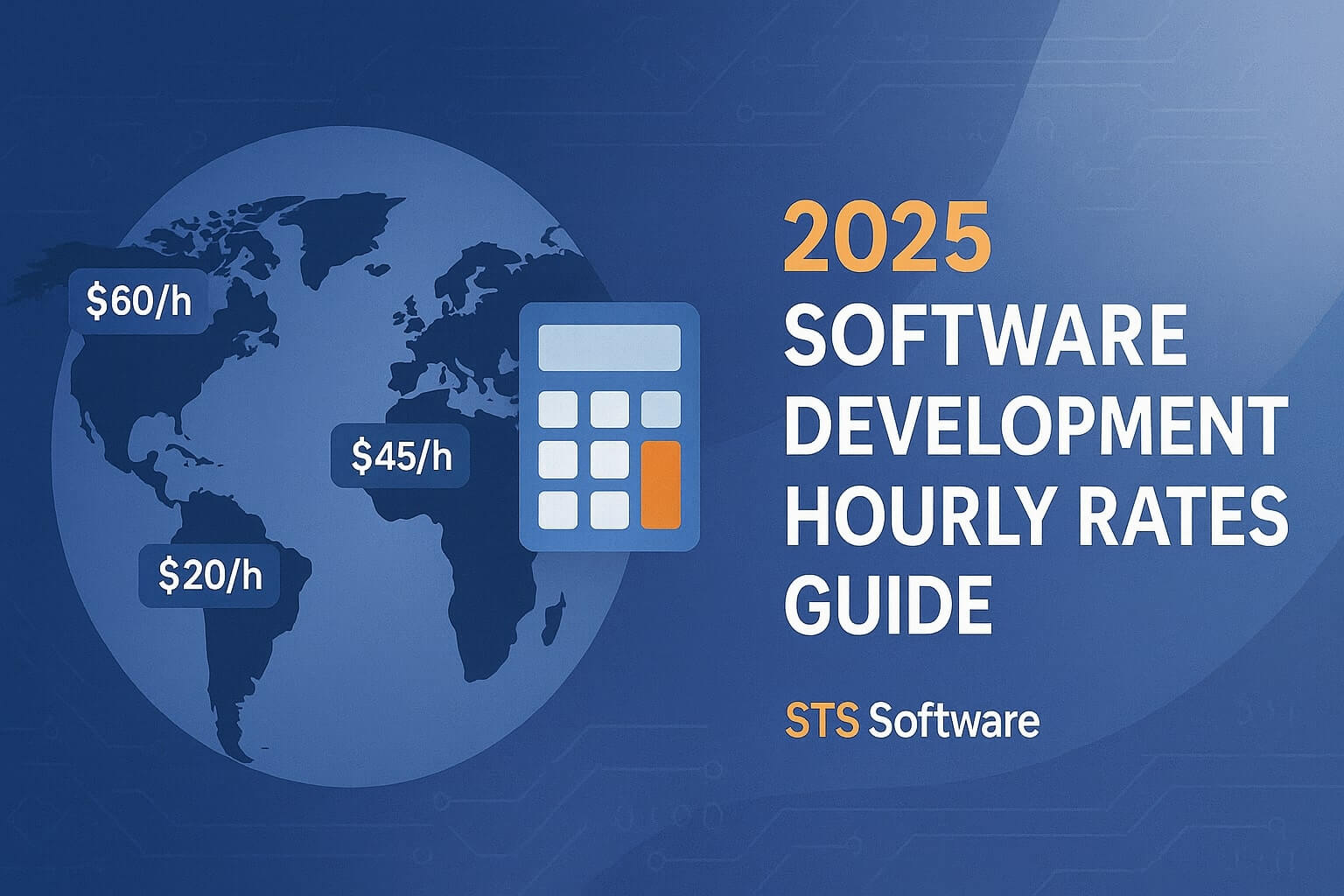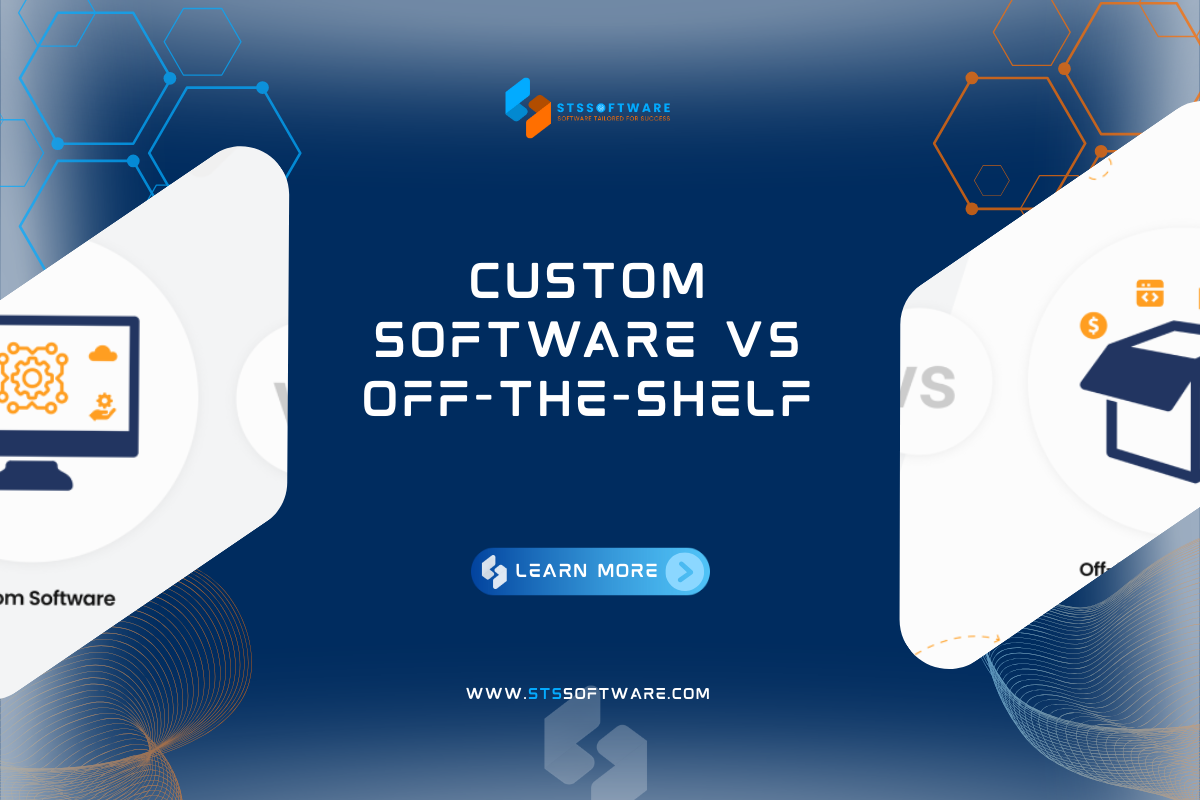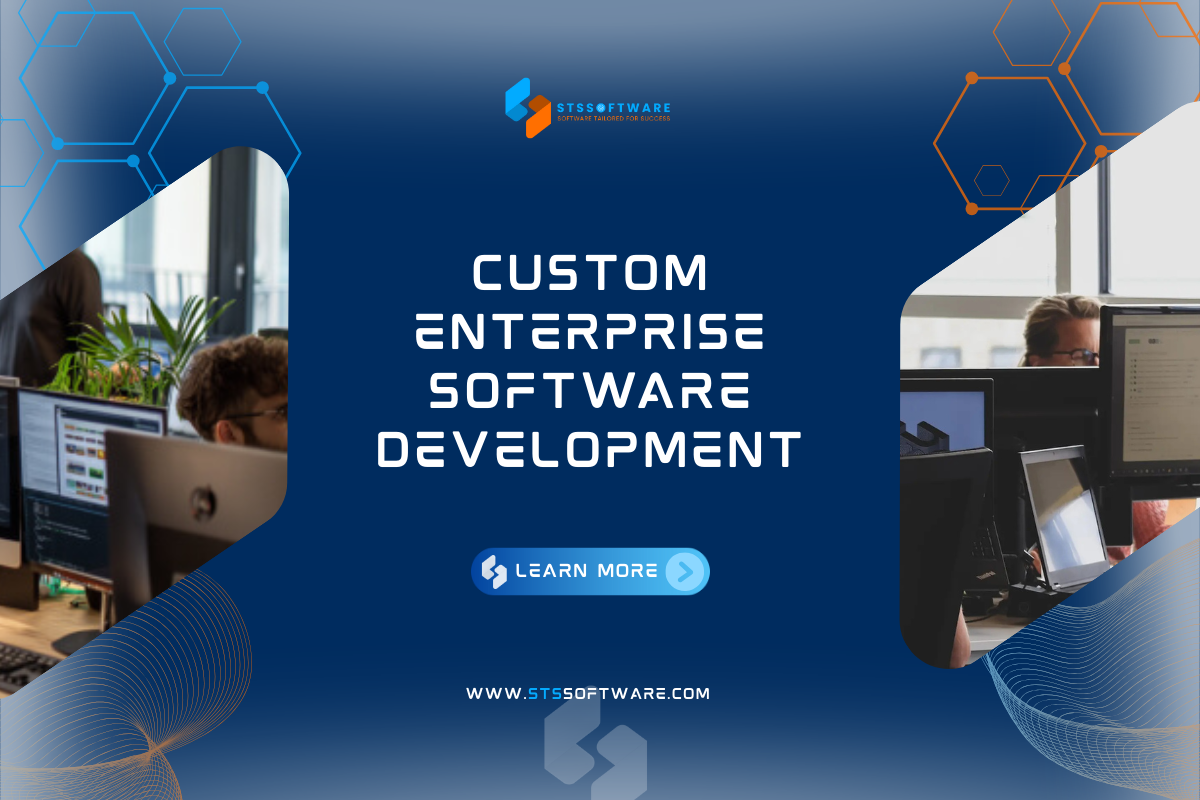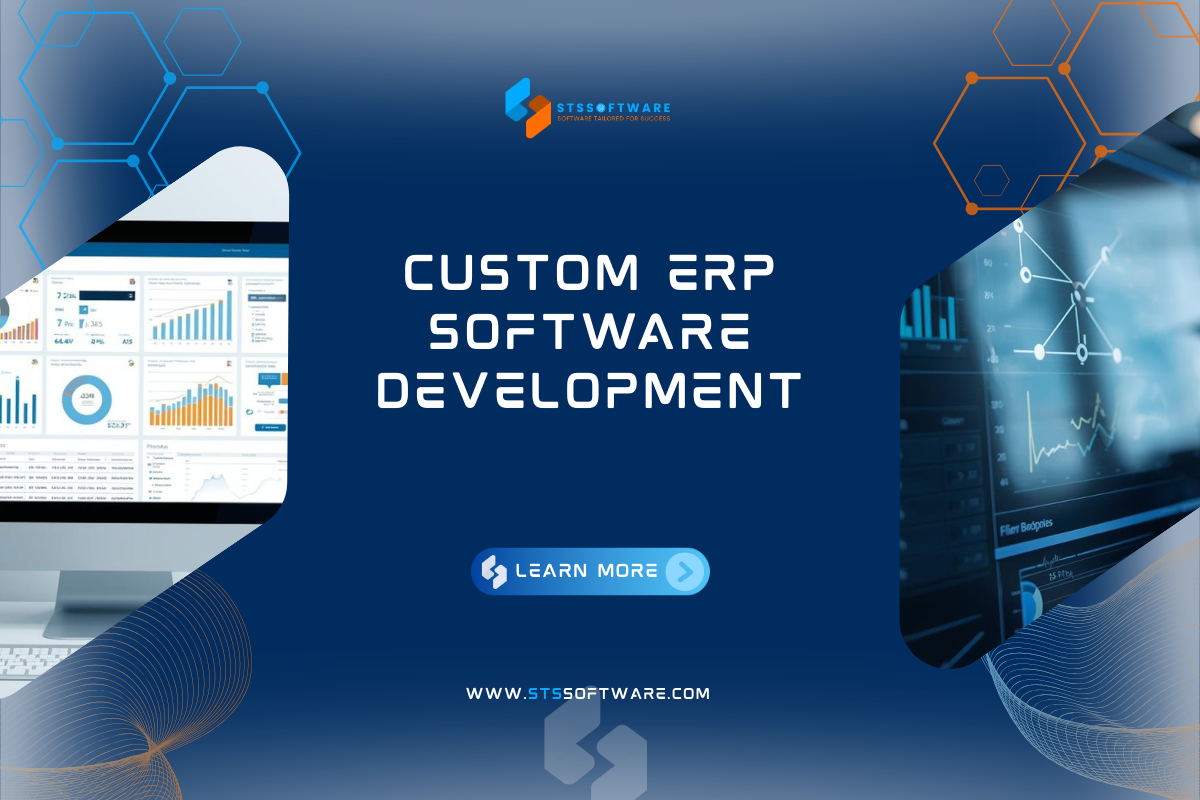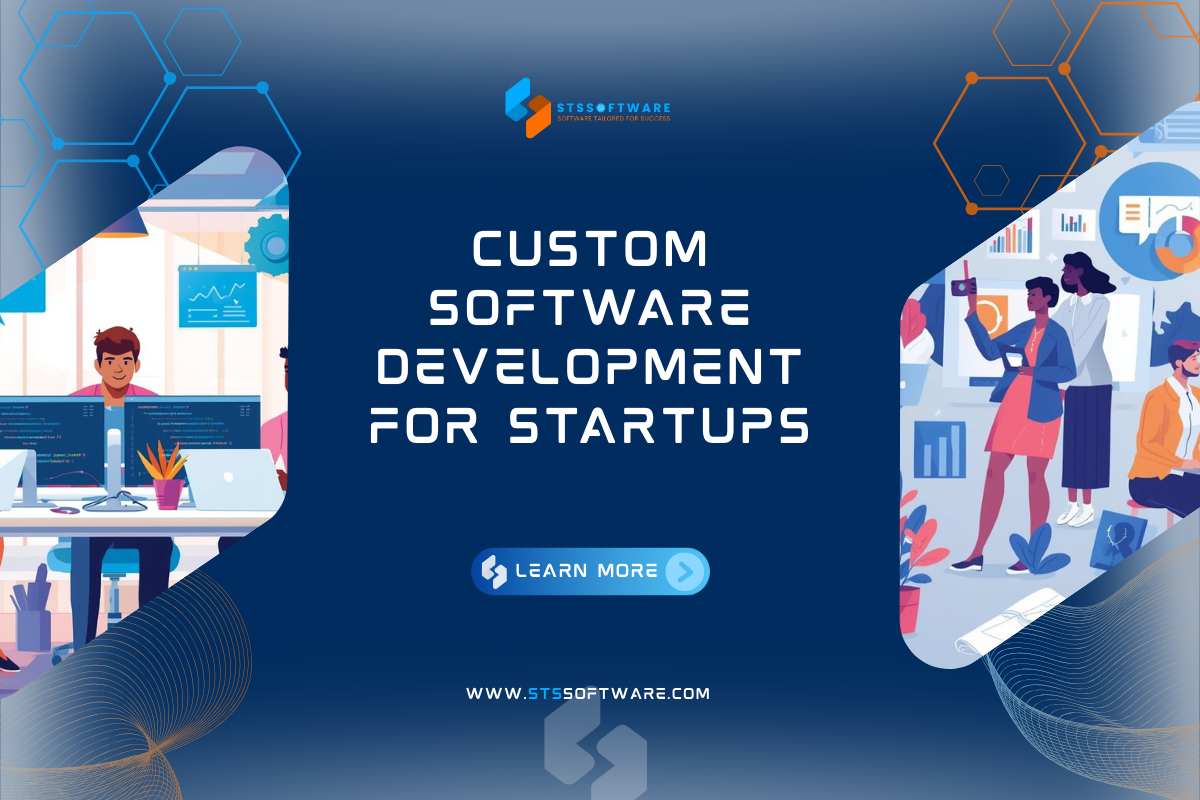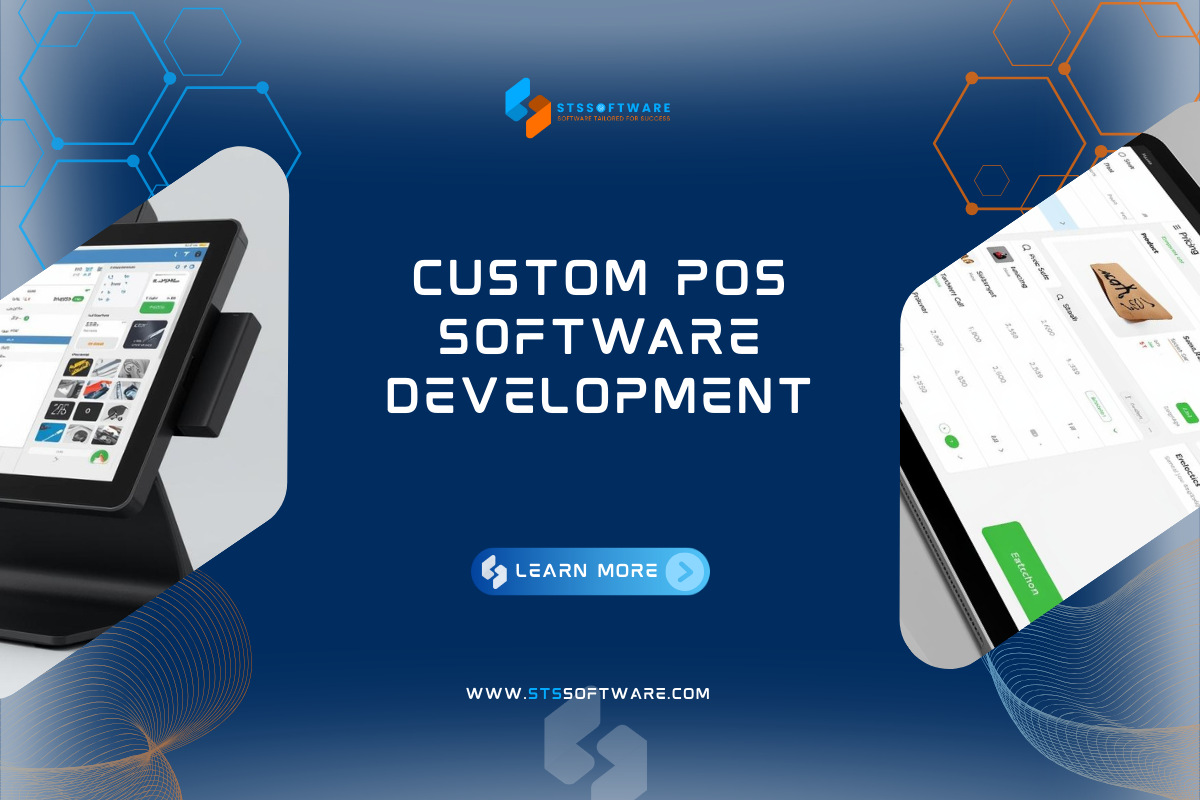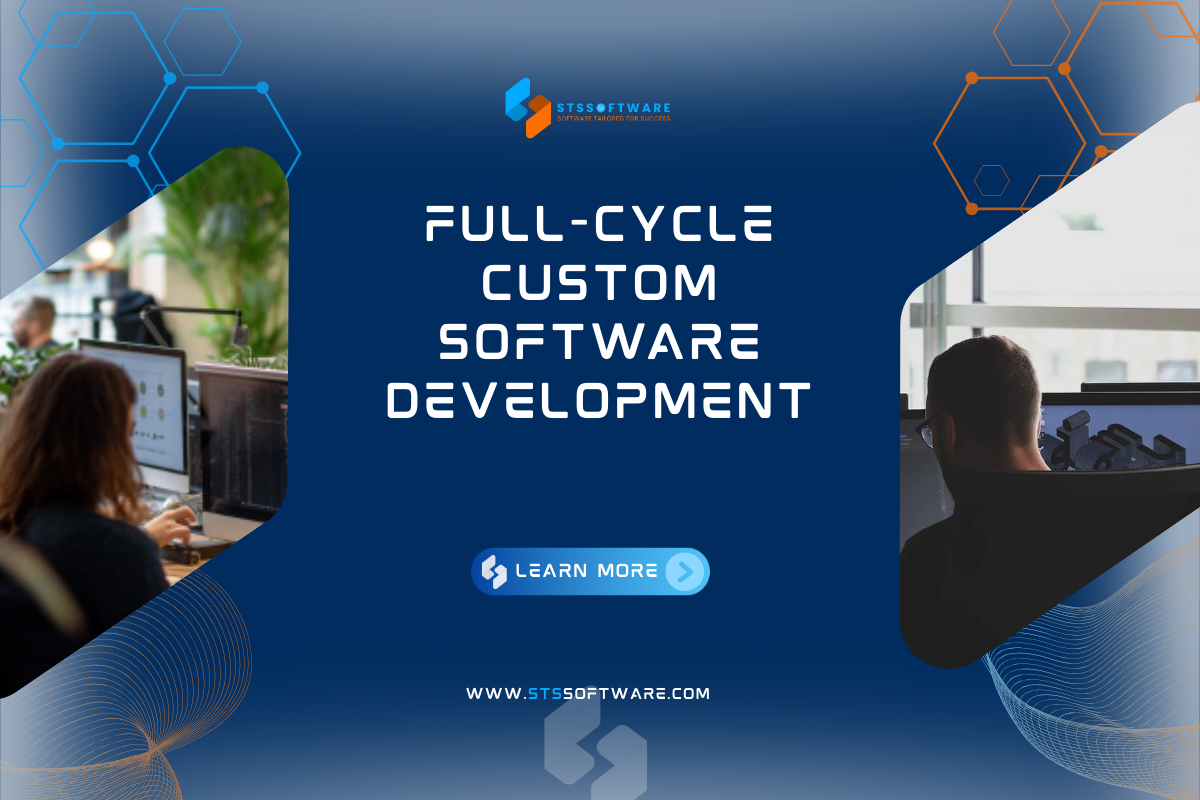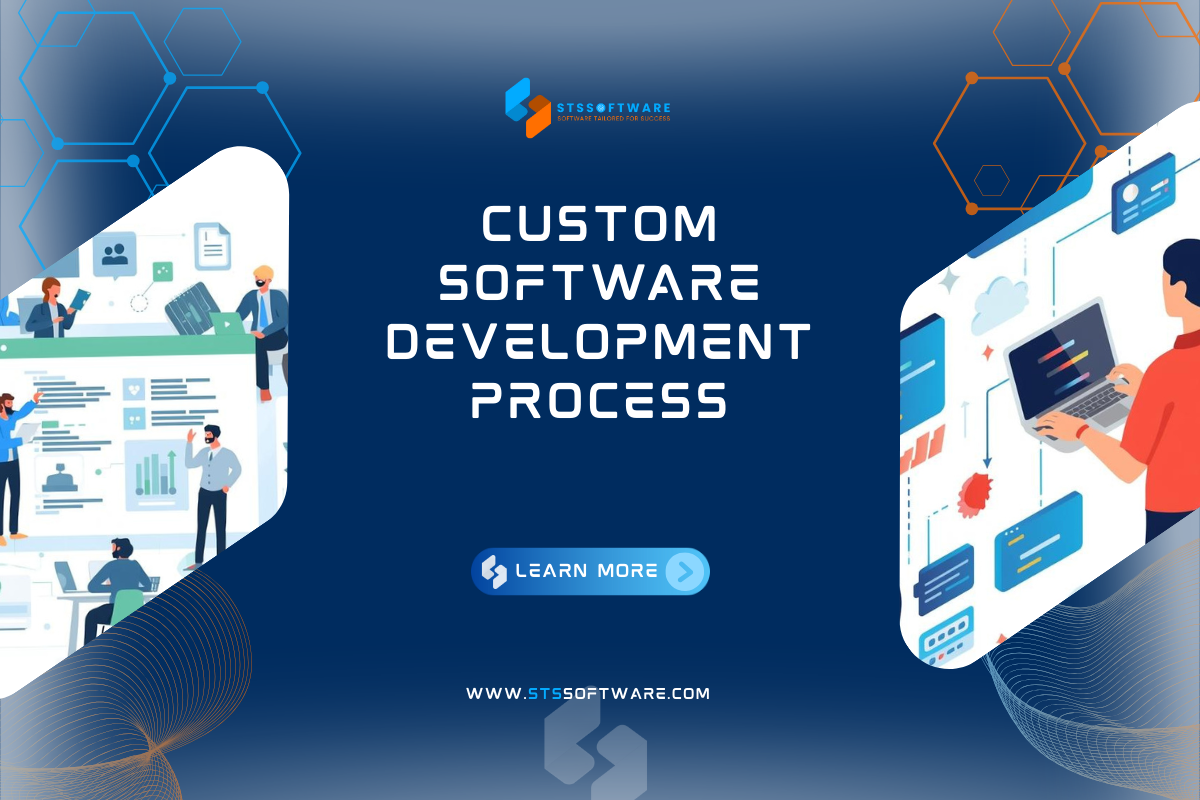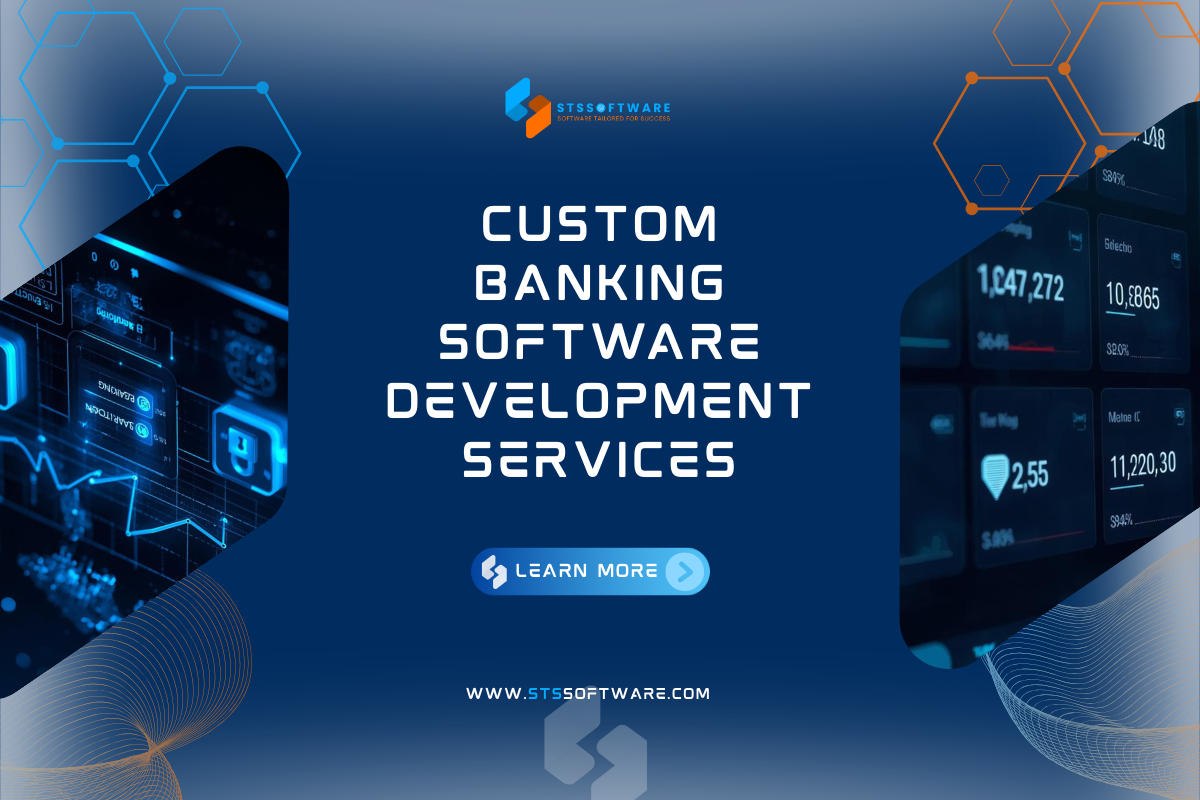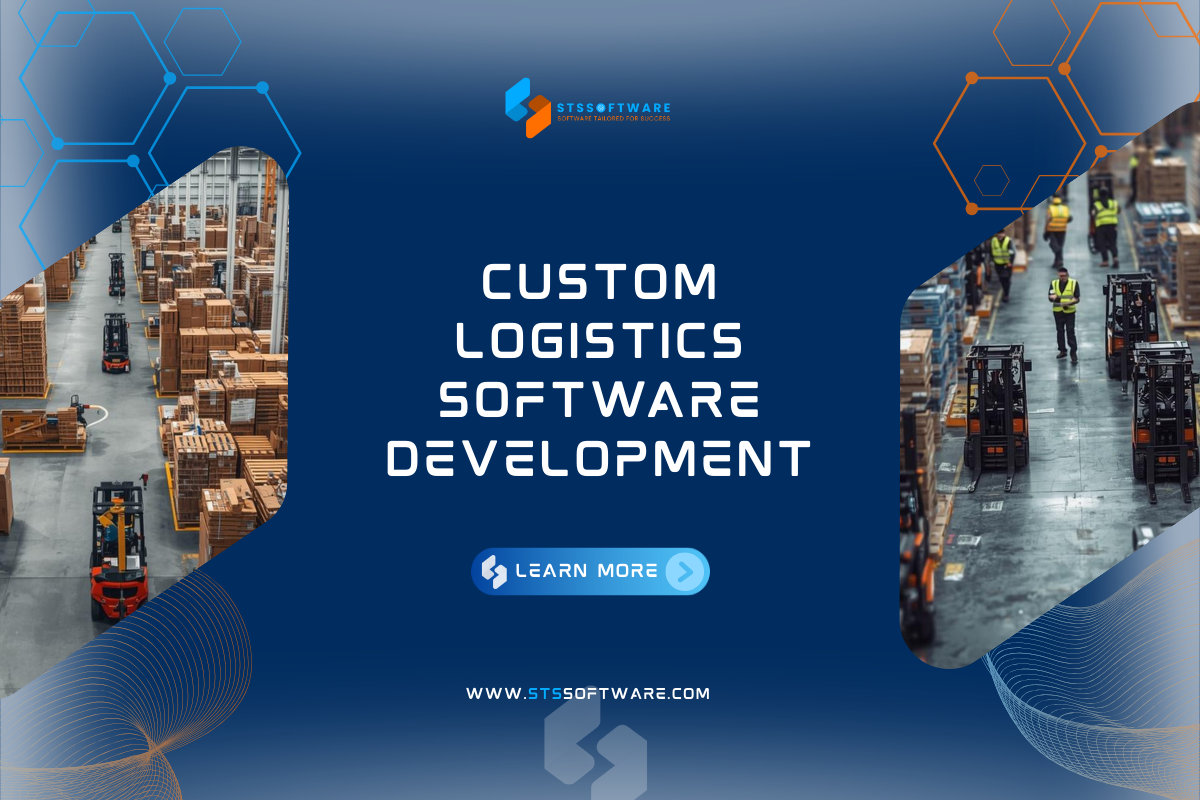Software development hourly rates in 2025 range from $25-$300+, depending on location, expertise, and project complexity, with strategic offshore partnerships delivering 40-60% cost savings. STS Software’s 13+ years of serving 300+ global clients across healthcare, fintech, and logistics provide comprehensive insights into optimizing development costs while maintaining enterprise-grade quality.
Market dynamics show North American rates averaging $70-$200+ per hour, while Eastern European alternatives offer comparable expertise at $30-$65 per hour. Asian markets present aggressive pricing at $20-$45 per hour, though communication and cultural factors require careful evaluation for complex enterprise projects.
Key Takeaways
- Regional arbitrage opportunities: Strategic offshore partnerships reduce costs 40-60% without compromising technical quality or delivery timelines
- Experience-based pricing tiers: Junior developers ($25-$50/hour), mid-level ($45-$85/hour), senior ($75-$150+/hour) with specialized expertise commanding premium rates
- Technology stack multipliers: AI/ML development (30-50% premium), enterprise systems (20-30% premium), blockchain (100-200% premium) over standard web development
- Engagement model optimization: Dedicated teams reduce costs 25-35% vs project billing through resource efficiency and reduced overhead
- Hidden cost factors: Management, infrastructure, and compliance add 30-50% to base rates, requiring comprehensive budgeting approaches
- Quality correlation myths: Higher rates don’t guarantee superior outcomes without proper vendor vetting, methodology assessment, and cultural fit evaluation
Why are Software Development Hourly Rates Important for Your Business?
Software Development Hourly Rates are important for your business because they are crucial for controlling project scope, managing budget risk, ensuring quality alignment, and optimizing time-and-materials versus fixed-bid contracts. These rates move beyond simple expense tracking; they are a direct indicator of the expertise and specialized value you are acquiring.
Software Development Hourly Rates by Region: Comparison Matrix
Understanding software development hourly rates across different regions helps businesses make informed outsourcing decisions. Geographic arbitrage remains the most significant cost optimization opportunity available to modern enterprises.
Bar chart comparing average hourly rates for software developers across different regions including North America, Western Europe, Eastern Europe, and Asia Pacific
Global Software Development Hourly Rates by Region:
| Region | Typical Hourly Rate (USD) |
| North America | $70 – $200 |
| Western Europe | $60 – $150 |
| Eastern Europe | $25 – $60 |
| Asia Pacific | $20 – $45 |
STS Software’s hybrid model combines US-based senior oversight with offshore talent, achieving 40-50% cost savings while maintaining Fortune 500 quality standards. This approach eliminates common offshore challenges like communication gaps and cultural misalignment.
Visit our services: Custom software development solutions
How Does Experience Level Impact Software Development Hourly Rates?
Developer experience levels create distinct value propositions with corresponding rate structures. Understanding these tiers enables optimal team composition for different project phases and requirements.
Junior Developer
Junior developers with 1-3 years of experience handle routine coding tasks, bug fixes, and feature implementations under senior supervision. Their rates range $25-$50 per hour across most global markets, with specific technology knowledge creating premium opportunities.
Fresh graduates from top-tier computer science programs often command higher entry rates despite limited experience. University partnerships, internship programs, and academic projects demonstrate practical application of theoretical knowledge worth premium consideration.
Mid-Level Developer
Mid-level developers with 4-7 years of experience represent optimal value for complex feature development and system integration projects. Their $45-$85 per hour rates reflect the ability to work independently while requiring minimal oversight from senior staff.
Technical leadership capabilities emerge at this experience level, with architects making critical design decisions. Database optimization, API development, and third-party integration expertise justify rates toward the higher end of mid-level ranges.
Senior Developer
Senior developers with 8+ years of experience command $75-$150+ hourly rates through architectural expertise and team leadership capabilities. Their strategic thinking, risk assessment, and technology selection significantly impact long-term project success and maintainability.
Code review, mentoring responsibilities, and client communication skills distinguish senior developers from technical contributors. Enterprise clients specifically seek senior expertise for mission-critical systems requiring reliability, scalability, and compliance adherence.
Technology Stack Premium Analysis
Technology specializations create significant rate variations, with emerging and complex technologies commanding substantial premiums. Market demand, learning curve complexity, and scarcity of expertise drive these pricing differentials.
| Technology Category | Rate Premium | Typical Range | Key Skills |
|---|---|---|---|
| Standard Web (React, Node.js) | Baseline | $45-$120/hr | Frontend, Backend, Database |
| Mobile Development | +15-25% | $50-$140/hr | iOS, Android, Cross-platform |
| Cloud Architecture | +20-30% | $60-$150/hr | AWS, Azure, DevOps, Kubernetes |
| AI/Machine Learning | +30-50% | $70-$200/hr | Python, TensorFlow, Data Science |
| Blockchain/Crypto | +100-200% | $100-$300/hr | Solidity, Cryptography, DeFi |
| Enterprise Integration | +25-40% | $65-$170/hr | SAP, Salesforce, Legacy Systems |
STS Software’s expertise in AI development, healthcare compliance, and enterprise integration enables premium positioning while delivering measurable ROI through automation and process optimization. Our 350+ engineers include specialists across all major technology categories.
Engagement Model Cost Optimization
Different engagement models offer varying cost structures and risk profiles. Understanding these options enables businesses to select optimal arrangements based on project characteristics and organizational capabilities.
Software Development Cost Calculator
Get instant estimates based on your project requirements
Staff Augmentation Model
Staff augmentation provides maximum flexibility by integrating external developers with existing teams while maintaining direct management control. This model works best for organizations with strong project management capabilities and specific skill gaps.
- Rate Structure: Market rates plus 10-15% agency markup
- Management Overhead: Client assumes full project management responsibility
- Scalability: Easy to adjust team size based on changing requirements
- Risk Distribution: Client bears delivery and quality risks
Dedicated Development Team Benefits
Dedicated development teams reduce costs 25-35% through economies of scale and long-term resource commitments. STS Software’s dedicated teams include project managers, developers, QA specialists, and DevOps engineers as integrated units.
- Team Composition: Complete cross-functional development unit
- Cost Optimization: Reduced overhead through shared resources
- Knowledge Retention: Deep product understanding over time
- Quality Consistency: Established processes and coding standards
Full Project Outsourcing Advantages
Complete project outsourcing transfers maximum risk while enabling focus on core business activities. This model works best for well-defined projects with stable requirements and clear success criteria.
- Fixed-price options eliminate hourly rate concerns
- Risk transfer to experienced development partners
- Resource optimization through vendor expertise
- Predictable budgeting for financial planning purposes
Hidden Cost Analysis and Budgeting
Comprehensive project budgeting extends beyond base software development hourly rates to include often-overlooked expenses that can significantly impact total costs. Understanding these factors prevents budget surprises and enables accurate cost comparisons.
Project Management and Coordination Costs
Management overhead typically adds 15-25% to base development costs through project coordination, client communication, and team management activities. These costs vary significantly based on engagement model and vendor capabilities.
| Management Activity | Time Allocation | Cost Impact |
|---|---|---|
| Daily standups and planning | 5-10% of development time | $5-$15 per developer hour |
| Client communication | 10-15% of project time | $10-$25 per hour |
| Code review and quality control | 15-20% of development time | $15-$30 per hour |
| Documentation and reporting | 10-12% of project time | $8-$20 per hour |
Infrastructure and Tooling Expenses
Development infrastructure costs contribute 5-10% to total project expenses through tools, environments, and platforms. These investments support quality outcomes but require careful budgeting consideration.
- Development environments for staging and testing
- CI/CD pipeline setup and maintenance
- Security tools for code scanning and vulnerability assessment
- Project management platforms for collaboration and tracking
- Design and prototyping tools for user experience development
Quality Assurance Integration
Comprehensive testing typically adds 20-30% to development timelines and costs but significantly reduces post-launch maintenance expenses. This investment pays dividends through reduced support costs and improved user satisfaction.
Quality Investment ROI: STS Software’s integrated QA approach prevents the 70% cost increase associated with fixing bugs in production versus development phases. Our automated testing frameworks reduce long-term maintenance costs while ensuring reliability.
Industry-Specific Rate Variations
Different industries command varying software development hourly rates based on regulatory requirements, complexity, and specialized knowledge demands. Understanding these variations helps set appropriate budget expectations.
Healthcare and Medical Device Development
Healthcare software development commands premium rates due to HIPAA compliance requirements, FDA regulations, and patient safety considerations. Specialized knowledge of medical workflows and regulatory standards justifies 25-40% rate increases.
Regulatory Requirements:
- HIPAA privacy and security compliance
- FDA 21 CFR Part 820 for medical devices
- HL7 and FHIR healthcare data standards
- Clinical trial management protocols
Financial Services and Fintech
Financial services development requires premium rates for PCI-DSS compliance, anti-money laundering controls, and real-time transaction processing. Banking regulations and security requirements demand specialized development approaches.
Compliance Framework:
- PCI-DSS for payment processing
- SOX controls for financial reporting
- KYC and AML regulatory requirements
- Real-time fraud detection systems
Manufacturing and IoT Systems
Industrial software development involves specialized hardware integration, real-time control systems, and safety-critical applications. Understanding manufacturing processes and industrial protocols commands premium pricing.
| Industry Sector | Rate Premium | Key Requirements |
|---|---|---|
| Healthcare/Medical | +25-40% | HIPAA, FDA, Clinical Workflows |
| Financial Services | +20-35% | PCI-DSS, SOX, Real-time Processing |
| Manufacturing/IoT | +15-30% | Hardware Integration, Safety Critical |
| Government/Defense | +30-50% | Security Clearance, Compliance |
Value-Based Pricing Strategies
Moving beyond hourly rates to value-based pricing models aligns developer incentives with business outcomes. These approaches often deliver superior results while managing costs effectively.
Outcome-Based Compensation Models
Performance-based pricing ties compensation to measurable business results rather than time investment. This approach incentivizes efficiency and innovation while sharing risks and rewards between clients and development partners.
Performance Metrics:
- Revenue generation from new features or applications
- Cost reduction through automation and process improvement
- User adoption rates and engagement metrics
- System performance improvements and uptime guarantees
- Time-to-market acceleration for competitive advantage
Strategic Partnership Arrangements
Long-term partnerships enable deeper cost reductions through relationship building and shared investment in success. These arrangements often include equity participation, revenue sharing, or multi-year volume commitments.
STS Software’s strategic partnerships typically reduce costs 15-25% below market rates while providing priority resource allocation and dedicated account management. Our client retention rate exceeds 90% due to value-focused relationships.
Market Trends and Future Projections
Understanding market trends helps businesses prepare for future software development hourly rates and make strategic technology investments. Several factors are reshaping the development landscape and pricing structures.
AI Integration Impact
Artificial intelligence integration across all software categories creates upward pressure on developer rates as basic coding becomes automated. Developers focusing on AI implementation, prompt engineering, and model integration command premium rates.
AI Skills Premium:
- Machine learning engineers: 40-60% above standard rates
- Data scientists: 30-50% premium for business intelligence
- AI/ML architects: 50-70% premium for system design
- Prompt engineers: 25-40% premium for LLM optimization
Remote Work Normalization
Remote work policies reduce geographic pricing variations as clients access global talent pools without relocation requirements. However, time zone overlap and cultural alignment maintain premium value for domestic and nearshore partnerships.
Technology Evolution Acceleration
Rapid technology evolution requires continuous learning and adaptation from development teams. Developers maintaining current expertise in emerging technologies command sustained premium rates.
- Cloud-native development and serverless architectures
- Microservices design and container orchestration
- Edge computing and distributed systems
- Quantum computing and advanced algorithms
- Augmented reality and immersive technologies
STS Software invests 10% of revenue in emerging technology training and research, ensuring our 350+ engineers maintain cutting-edge expertise commanding premium market rates while delivering superior client value.
FAQ
How do software development hourly rates vary by geographic location?
US-based developers charge $70-$200+ per hour, reflecting high living costs and competitive talent markets. Silicon Valley commands the highest rates at $150-$300+ per hour, while emerging tech hubs offer alternatives at $80-$150 per hour.
Eastern European markets provide compelling value at $30-$65 per hour with strong technical education and English proficiency. Asian markets offer aggressive pricing at $20-$45 per hour, though communication and cultural factors require careful evaluation for complex projects.
What factors beyond base rates impact total software development costs?
Management coordination typically adds 15-25% to base hourly rates through project oversight, client communication, and team coordination requirements. Infrastructure costs for development environments, testing platforms, and deployment systems contribute another 5-10% to total project expenses.
Quality assurance and testing typically require 20-30% additional time and resources beyond core development work. Comprehensive testing, security auditing, and performance optimization ensure reliable delivery but require dedicated specialist resources.
How can businesses optimize software development costs without compromising quality?
Dedicated development teams reduce costs 25-35% compared to project-based billing through resource efficiency and reduced management overhead. Long-term partnerships enable deeper discounts while building project-specific expertise and team stability.
Hybrid models combining US-based senior leadership with offshore development resources achieve 40-50% cost savings. STS Software’s approach maintains quality standards and communication effectiveness while accessing global talent pools.
What hidden costs should be included in software development budgeting?
Project coordination, requirements analysis, and client communication typically add 20-30% to base development costs. Technical architecture, security planning, and compliance assessment require senior expertise commanding premium rates.
Post-launch support, maintenance, and feature updates represent 30-40% of total software lifecycle costs. Strategic technology choices during initial development significantly impact long-term maintenance and scalability expenses.
How do technology specializations affect software development pricing?
AI and machine learning development carries 30-50% premiums due to specialized education and experience requirements. Natural language processing, computer vision, and predictive analytics expertise remain in short supply relative to market demand.
Blockchain development commands the highest premiums at 100-200% above standard rates due to the complexity of cryptography and distributed systems. Enterprise integration specialists charge 20-40% premiums for SAP, Salesforce, and legacy system modernization expertise.
What engagement models provide the best value for different project types?
Fixed-price contracts work best for well-defined projects with stable requirements, providing budget certainty and risk transfer. Time and materials arrangements suit exploratory projects with evolving requirements requiring flexibility and scope adjustments.
Dedicated teams optimize costs for long-term projects through resource efficiency and team stability. Staff augmentation fills temporary skill gaps while maintaining direct management control over project execution and quality standards.
How do experience levels impact software development hourly rates?
Junior developers (1-3 years) charge $25-$50 per hour for routine coding under supervision, while mid-level developers (4-7 years) command $45-$85 per hour for independent feature development. Senior developers (8+ years) earn $75-$150+ per hour for architectural decisions and team leadership responsibilities.
Technical leads and architects charge $100-$200+ per hour for strategic planning and complex system design. Specialized consultants with niche expertise often command $150-$300+ per hour for emerging technologies and legacy system modernization.
What compliance and regulatory factors affect software development costs?
Healthcare applications requiring HIPAA compliance add 25-40% to standard development costs through security protocols and audit requirements. Financial services applications with PCI-DSS and SOX compliance similarly command premium pricing for regulatory expertise.
Data privacy regulations like GDPR and CCPA require specialized development knowledge commanding premium rates. Security auditing, penetration testing, and compliance documentation add substantial costs but prevent expensive violations and breaches.
Conclusion
Software development hourly rates in 2025 present diverse opportunities for cost optimization without quality compromise through strategic vendor selection and engagement model optimization. STS Software’s comprehensive analysis across 800+ projects demonstrates that effective rate management requires understanding regional markets, technology premiums, and engagement model implications rather than simple cost minimization.
Our 13+ years of experience serving Fortune 500 clients reveal that successful development partnerships balance competitive pricing with quality delivery, effective communication, and long-term value creation. The optimal approach combines competitive offshore talent with US-based senior oversight, achieving 40-50% cost savings while maintaining enterprise-grade standards required by regulated industries.
Ready to optimize your development costs through strategic partnerships and proven methodologies that deliver measurable results? Contact STS Software’s expert team at +1 (206) 396-7993 for comprehensive project assessment and transparent pricing proposals tailored to your specific requirements, technology needs, and budget objectives.



